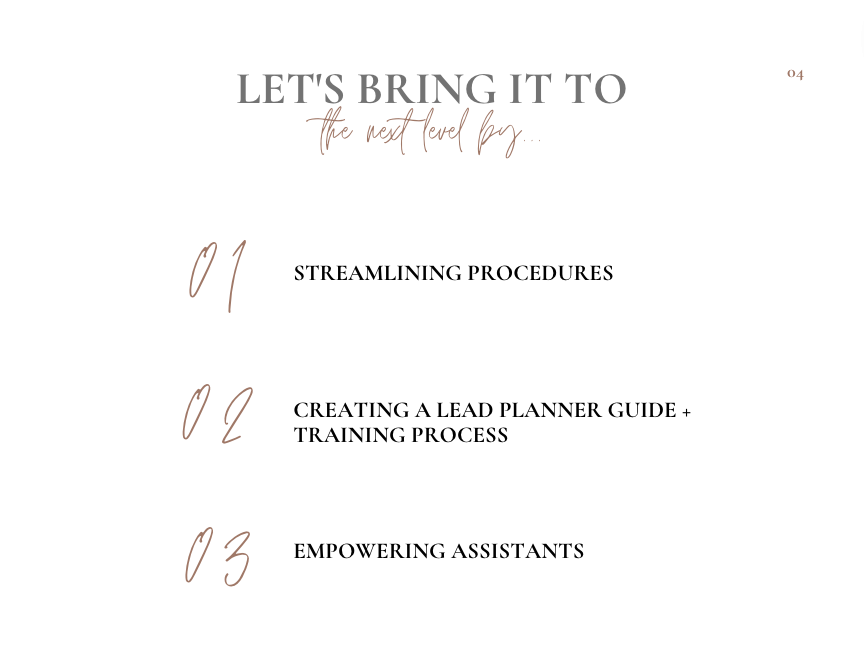How to Propose an Operational Streamlining Plan for a Company
It’s hard to see the whole picture when your nose is pressed up against the canvas.
The same is true for business owners when the in’s and out’s of the daily grind of their companies keep them from seeing their processes in their entirety. While owners will be quick to assure you that no one knows their business better than they do (and that’s likely the case), being knee-deep in the muck of it all is often a disadvantage.
The more laser-focused one is, the more vulnerable they are to blindspots and blindsides. For this reason, it’s necessary to have a guiding hand help business owners zoom out, see the big picture, identify the gaps, and develop solutions.
I recently dove into just that for a Sacramento-based wedding coordination company, Beyond Smitten Events, with an operational streamlining proposal.
Beyond Smitten coordinates dozens of weddings each season, garnering glowing reviews and accolades from couples and vendors alike. With approachable professionalism, Beyond Smitten has built a product and reputation warmly praised in the industry. On the brink of expansion, it became clear that the need for operational streamlining was necessary to smoothly advance to the next step.
So I proposed a plan following these steps:
Determined the “Why”
In the vein and wisdom of Simon Sinek, start with why.
Why streamline? Why take the time to zoom out and examine the whole picture? Why spend the energy?
The biggest why I identified here was that there is a sparkling reputation to uphold with Beyond Smitten. It took no more than five minutes on Yelp to see how touched past couples were by their experiences with the company and its owner.
What I saw in heartfelt reviews was a clear brand identity to foster and protect. With the hope of taking on more projects and expanding responsibility to a wider range of lead planners, it was evident that materials to maintain that level and warmth of service were necessary for Beyond Smitten to maintain brand integrity.
From the slide deck of my presentation where I expanded on the why behind the proposal.
2. I Brought in a Story
Stories sell.
In order to add validity to what I was proposing, I incorporated a concrete story to express how I had identified the operational holes I would go on to list. I shared a recent lead planning experience that illuminated pain points in the process and explained what this specific event helped me learn firsthand.
After sharing my personal narrative and what the experience helped me learn, I:
3. Positively Outlined the Gaps
To condense priorities, I determined the top 3 areas where greater care was needed within the process.
Like an X that marks the spot of buried treasure, I see gaps in systems as juicy opportunities to not only solve problems but bring things to the next level.
Under the banner of those 3 pain points, I then:
4. Presented the Solutions
In operations, never identify a problem without at least having the start of a solution. Come to the table with ideas then collaborate and discuss and determine with the team what the best approach would be to solve the issue, create the process, or refine what already exists.
From the 3 main gaps identified for Beyond Smitten Events, I then presented an outline of the solutions to each, detailing my vision, and requesting the responsibility to see it all through.
As one final touch before talking project timeline and discussing specifics, I:
5. Reiterated the Benefits
It’s important to drive home the value and call back to the relief that can be achieved in smoothing operations.
Fixing the nuts and bolts of how a team operates takes energy, money, and time.
It’s vital that business owners are reminded of how their businesses could soar in health, productivity, and ultimately, profits if they prioritize system streamlining.
In all, proposing an operational streamlining plan requires more than just pointing out flaws in the system.
It requires identifying process pain points, understanding why they are there, doing the work to develop the solutions, and selling the benefits of fixing the issues.







